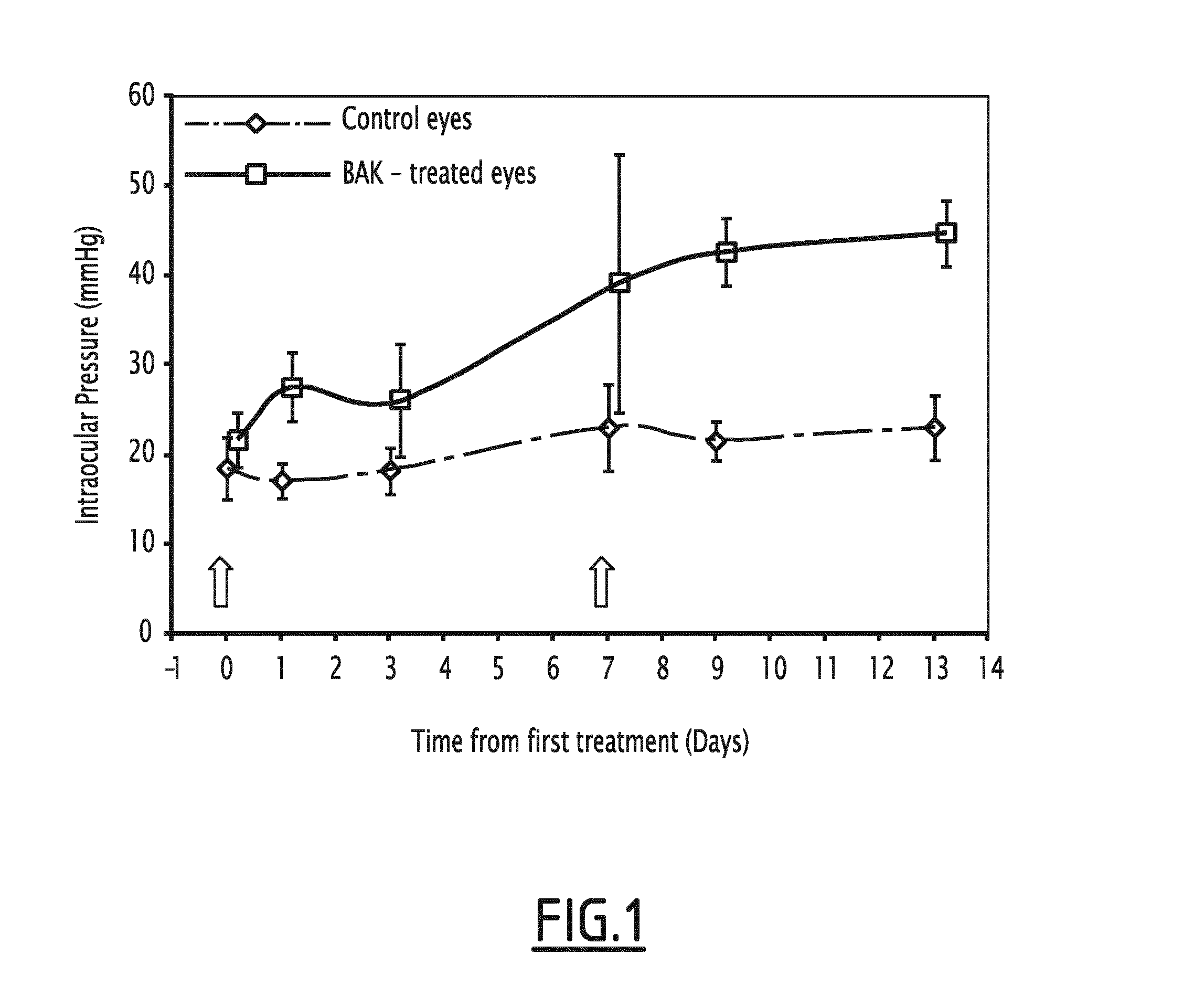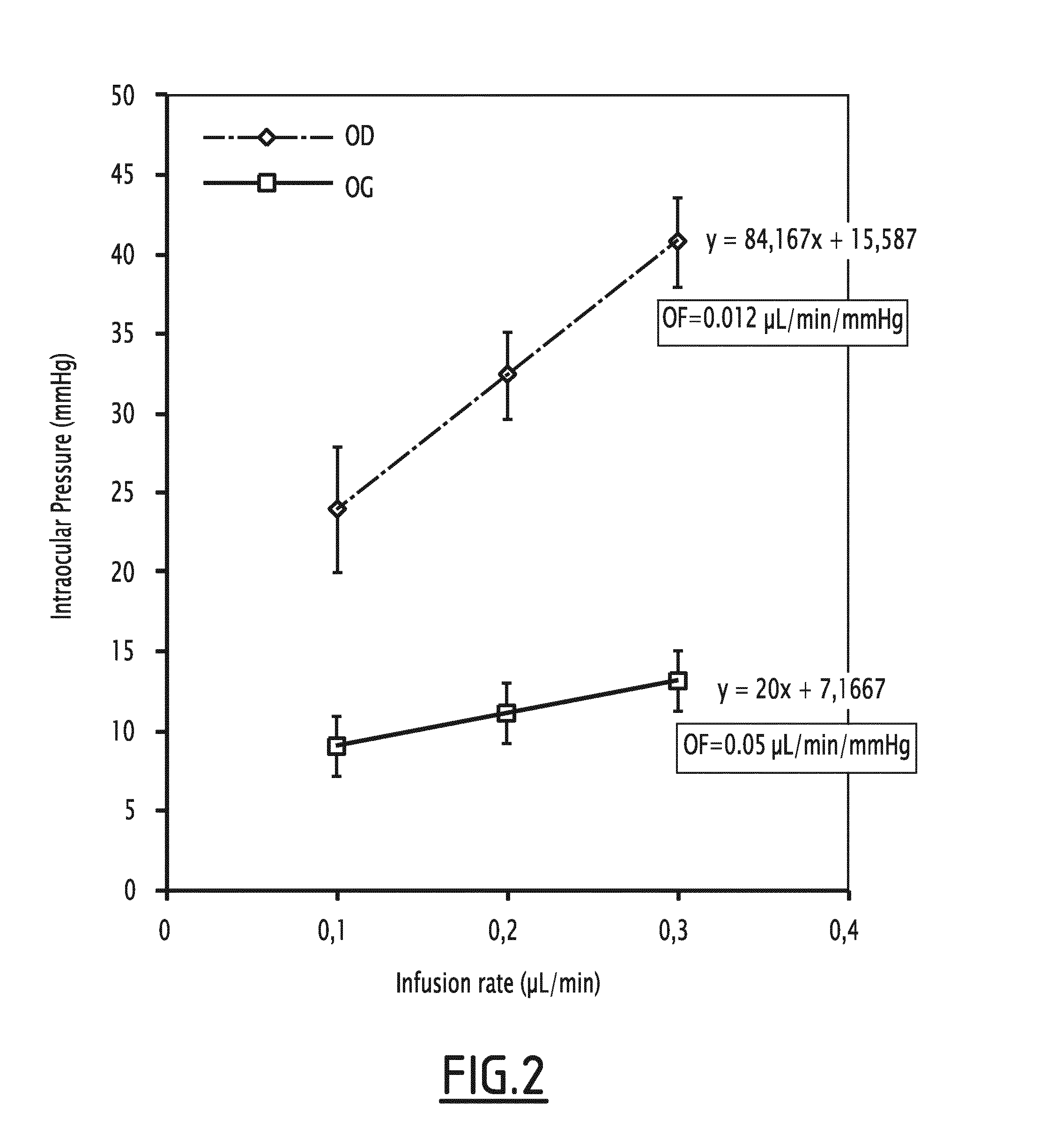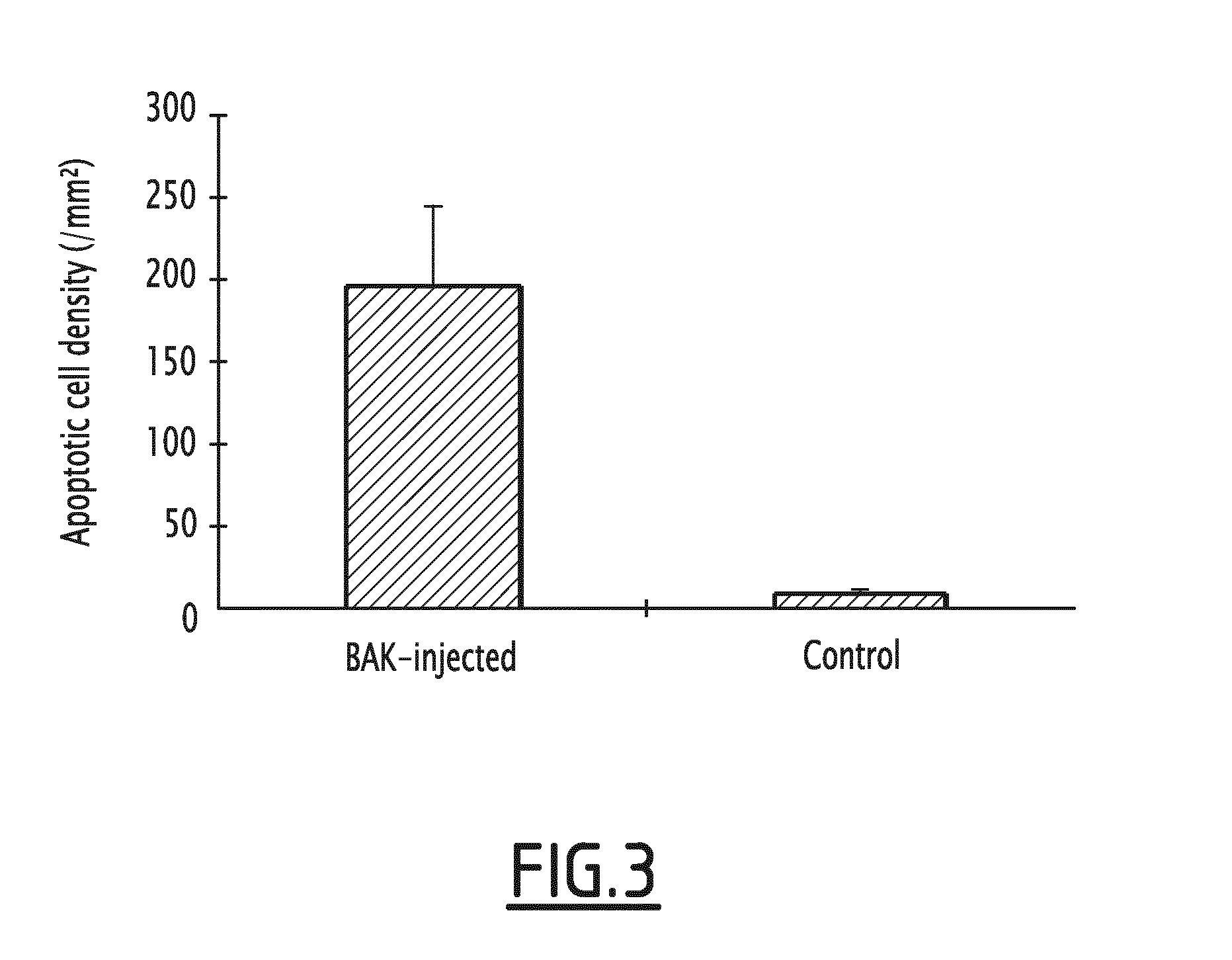Method for increasing the intraocular pressure in an animal
a technology of intraocular pressure and an animal, applied in the field of increasing the intraocular pressure in an animal, can solve the problems of difficult and restrictive work, trabecular pathophysiology study with this model is rendered impossible, and the effect of the model is only effective in monkeys
- Summary
- Abstract
- Description
- Claims
- Application Information
AI Technical Summary
Benefits of technology
Problems solved by technology
Method used
Image
Examples
example 1
Materials and Methods
[0051]Animals and Intra-Ocular Pressure Monitoring
[0052]Six male 8-week-old Long-Evans rats weighing 300-350 g were used. Animals were kept in pathogen-free conditions with food and water available ad libitum and housed in a 12-h light / 12-h dark cycle. Ocular integrity was checked using the slit lamp biomicroscope. At D0, first subconjunctival injection of 0.1% BAK (100 μL) was performed in the right eye whereas the left eye received PBS only as control. A second injection was performed seven days after following the same protocol. Animals were daily monitored for intraocular pressure using a handheld tonometer (TonoLab, Medtronics, Jacksonville, Fla., USA) without sedation. All experiments were conducted in accordance with the Association for Research in Vision and Ophthalmology for the Use of Animals in Ophthalmic research.
[0053]In vivo Outflow Facility Measurement
[0054]Six days after the second injection of BAK, trabecular outflow facility was measured in viv...
example 2
Results
[0062]Subconjunctival Injection of BAK Increases the Intra-Ocular Pressure
[0063]First injection of 0.1% BAK induced a slight increase in intra-ocular pressure at D7. Interestingly, the increase in intra-ocular pressure became significant after a second administration of 0.1% BAK, as compared to control eyes receiving the vehicle only. Such significant ocular hypertension remained significant until the end of the experiments (FIG. 1).
[0064]Subconjunctival Injection of BAK Reduces Outflow Facility
[0065]Important increase in intra-ocular pressure with infusion rate revealed a low trabecular outflow facility in BAK-injected eyes compared to control eyes, further confirming that BAK-induced ocular hypertension resulted from an impaired trabecular function (FIG. 2).
[0066]Subconjunctival Injection of BAK Increases Trabecular Cell Apoptosis
[0067]Trabecular density of apoptotic cells was increased in BAK-injected eyes compared to controls as assessed by TUNEL labelling.
[0068]BAK Subco...
PUM
| Property | Measurement | Unit |
|---|---|---|
| pressure | aaaaa | aaaaa |
| pressure | aaaaa | aaaaa |
| time | aaaaa | aaaaa |
Abstract
Description
Claims
Application Information
 Login to View More
Login to View More - R&D
- Intellectual Property
- Life Sciences
- Materials
- Tech Scout
- Unparalleled Data Quality
- Higher Quality Content
- 60% Fewer Hallucinations
Browse by: Latest US Patents, China's latest patents, Technical Efficacy Thesaurus, Application Domain, Technology Topic, Popular Technical Reports.
© 2025 PatSnap. All rights reserved.Legal|Privacy policy|Modern Slavery Act Transparency Statement|Sitemap|About US| Contact US: help@patsnap.com



